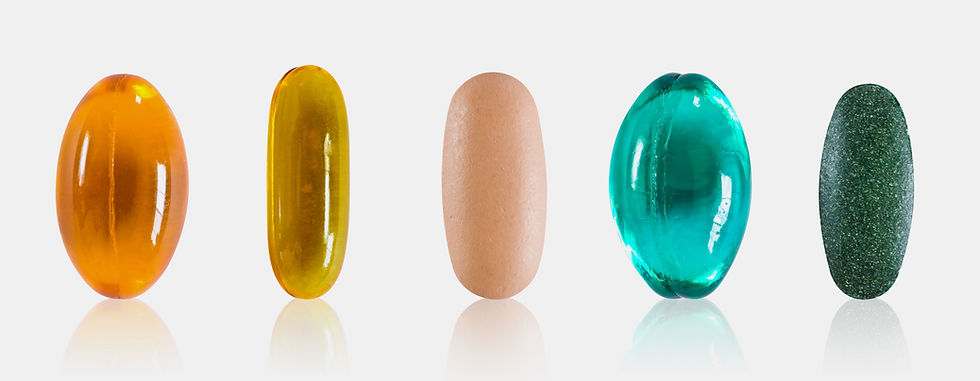- The Nourished Way
- Dec 16, 2021
- 2 min read
I talk a lot about eating the rainbow with my clients - why? It's the the easiest way to make sure you get a variety of nutrients, plenty of fiber, have more energy, feel better and have better digestion, not to mention its a lot of fun! It's so easy, in fact, in school I even created a program for grade school kids on how to eat more plants which included a rainbow chart. If kids can do it - so can you!
Each color brings unique nutrients, so shoot to get at least a new color every day or the whole rainbow each day, whatever works for you. It’s good to know most plants also provide fiber and antioxidants to support better gut health and overall immunity so you can't go wrong with any of the choices on this list!
❤️ Red
These foods are packed with Vitamin A (beta carotene), vitamin C, manganese for eye and heart health and often have lycopene which may help fight cancer
Where to get them? Beets, tomatoes, bell peppers, raspberries, strawberries, rhubarb, apples, cherries
🧡 Orange
These foods are superstars known for their vitamin C, vitamin A and folate, calcium, potassium, and thiamine for immune health and eye health. Pair these with iron rich foods for better absorption
Where to get them? Oranges (duh), sweet potatoes, carrots, pumpkins, nectarines, peaches, bell peppers
💛 Yellow
Packed with B6 and potassium these fruits and veggies can help with muscle cramping and digestion and they're also rich in magnesium and vitamin A
Where to get them? Bananas, lemons, summer squash, bell peppers
💚 Green
Green veggies and fruit are a must have in any rainbow diet. They are packed with antioxidants, vitamin K, magnesium, nitrates, calcium and folate, essential for immune, cell and heart health
Where to get them? Leafy greens, celery, cucumber, broccoli, green beans, bok choy, asparagus
💙 Blue
Some of the prettiest, blue plants are rich in manganese and vitamins C and K for supporting immune support and bone health
Where to get them? Blueberries, blackberries, grapes, elderberries, blue cauliflower and carrots
💜Purple
Be a purple plant eater! These are packed with potassium, B vitamins and vitamin C, antioxidants to support healthy cholesterol and blood pressure. The purple color also means anthocyanins which help protect blood vessels and helps protect collagen
Where to get them? Plums, eggplants, grapes, cabbage
⚪️ White - Yes, white is in the plant rainbow :) These guys are full of riboflavin, vitamin C, vitamin D and selenium for inflammation. They also contain allicin, a compound that helps protect against heart disease and lowers LDL and increases HDL cholesterol.
Where to get them? Garlic, onion, cauliflower, leeks
It can be hard to find some of these in the winter, depending on where you are but, remember, canned and frozen foods are just as nutritious as their fresh counterparts, so make sure to hit up the frozen aisle too!
Can you get some added color in your diet? What color will you get today? Which one is your favorite?

